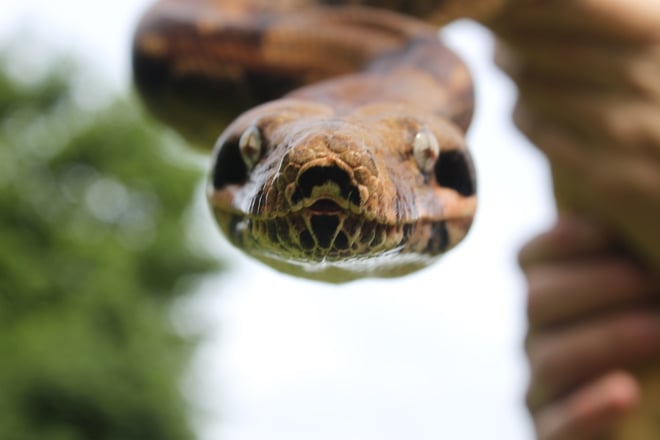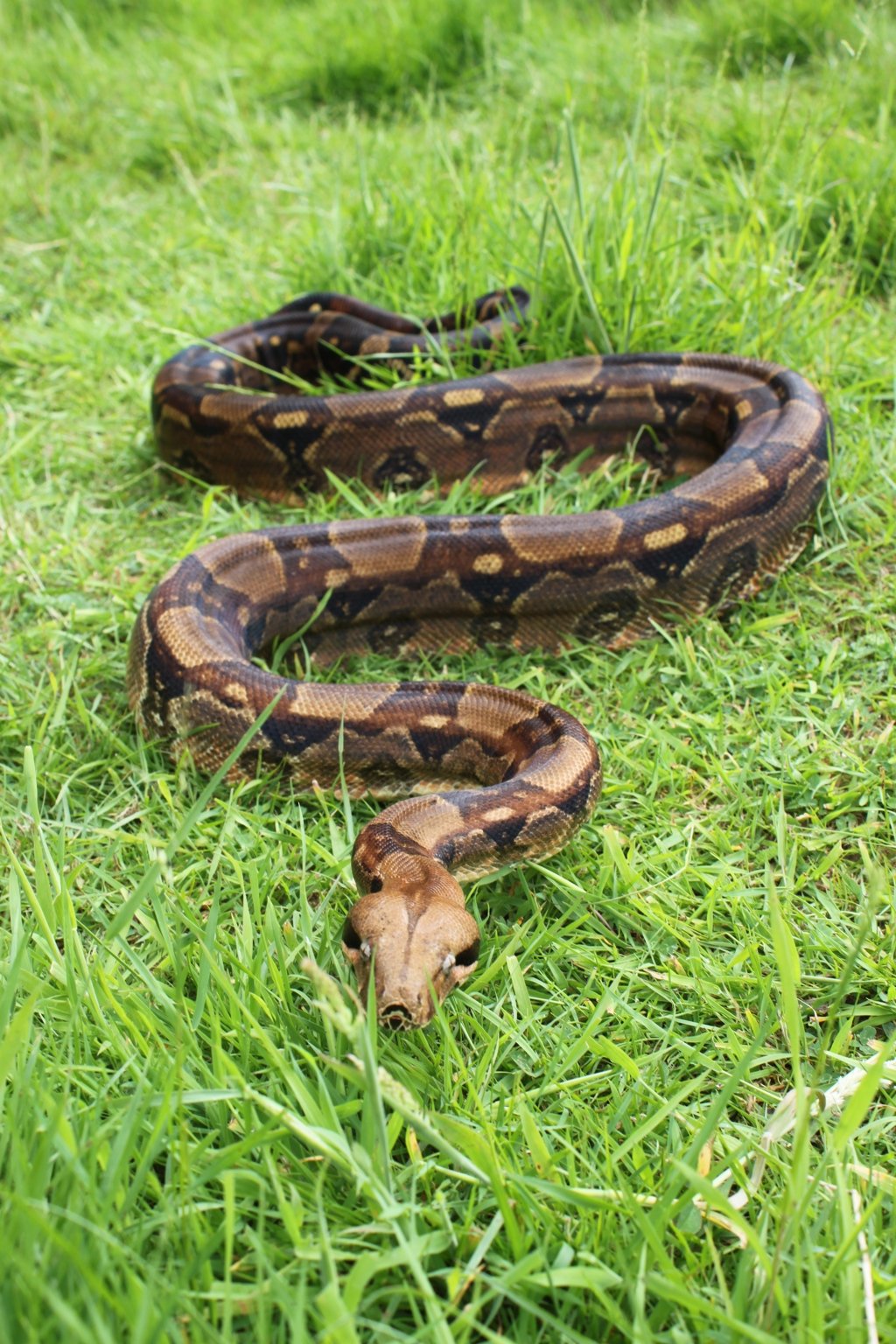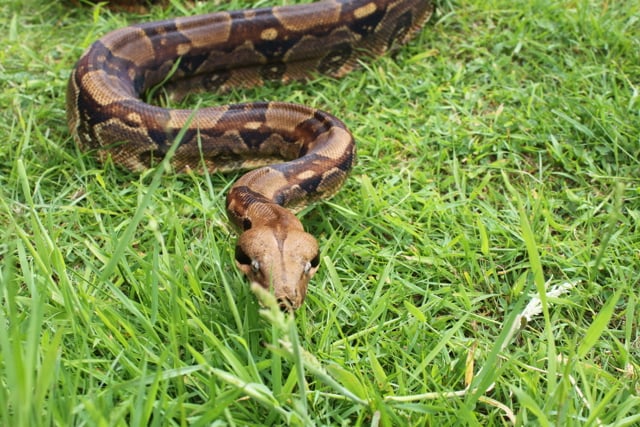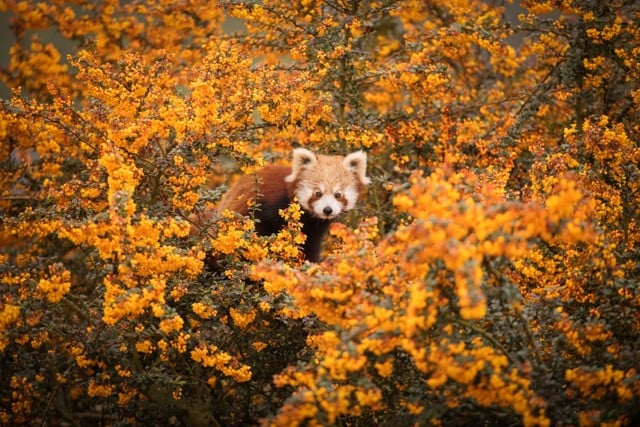
Overview
Boa constrictors are non-venomous snakes; they strike at their prey grabbing it with their sharp teeth. They wrap their muscular body around their victim, squeezing until it suffocates.
You can visit the Boa constricor and other reptilian residents inside Reptile Ranch located in the Foot Safari

All about us
| Distribution: | Central and Southern America |
|---|---|
| Habitat: | Tropical rainforests, semi-deserts, rocky hillsides, savannahs, and near cultivated fields and homes |
| Height: | Length 4 metres |
| Weight: | 27 kg |
| Lifespan: | 20 - 30 years |
| Threats: | Habitat destruction and hunting for skins |
About us
Scientific name: Boa constrictor
These snakes are solitary and nocturnal. During the day they often rest at a protected spot, e.g. the burrow of a rodent. They climb well, and those in forests may spend a lot of time in trees basking in the sun. They can’t move very fast, only about 1 mile per hour (1.6 kilometres per hour) on open ground. But since they don’t have to chase their food, they don’t need to travel quickly. Boa constrictors can swim; most don’t spend significant time in water. During colder weather, in cooler parts of their range, they may become almost inactive.

Boa constrictors are thick-bodied snakes. They are pinkish or tan, cream, golden, grey or brownish in colour, with a pattern of brown, reddish-brown to black saddles or ovals. Depending on the region and specimen they can have more or less prominent dark red, reddish brown or brown markings on the tail. This coloration camouflages them well. Their relatively short tails are prehensile and able to securely grip branches.
Young boa constrictors eat mice, small birds, lizards, and frogs, as the snake grows so does the size of its prey. Adult snakes’ diet ranges from rodents and lizards (including iguanas) to birds, marmosets, monkeys, capybaras, agoutis, mongooses, wild pigs, caimans, opossums and bats. Boas will hunt for bats in the wild, catching them as they hang in trees or caves, or snatching them as they fly by. As a nocturnal hunter they locate prey with the heat sensitive scales on their snout, as well as by scent. The prey is killed by constriction until it suffocates. Snakes have a special tube in the bottom of its mouth that remains open to one side to take in air, helping the snake to breathe while eating its prey.
They reach sexual maturity at around 3-4 years of age. During the rainy season, when they breed and display courtship, males wind back and forth over the female's body, stimulating her cloaca with his spurs. Spurs are remnants of when boas had hind legs; they are generally hidden below scales on either side of the vent (genital).
Boas are ovo-viviparous, which means the female retains her eggs internally until they hatch, so she will give birth to live, fully formed young. Most clutches number 20-60 thin-membrane eggs. The female will usually eat little or nothing while she is retaining eggs (called gravid in reptiles). The neonates (baby snakes) are born after approximately 100-120 days of development.
Boa constrictors are 17-20 inches (43-51 cm) long at birth, and can grow to 3 feet (90 cm) in several months. Some of the young may be still-borns or non-fertilised eggs known as "slugs". When the young are ready to be born, they are pushed out an opening called the cloaca. They are still surrounded by the protective membrane and must break it open. The young are independent at birth and will grow rapidly for the first few years, shedding regularly (once every one to two months).
Boa constrictors are not an endangered species. The number of boa ocnstrictors in the wild is not well-known, but they have become very rare in some parts of their range. Habitat destruction and hunting for skins to make tourist products or souvenirs contribute to the decline of reptiles worldwide. They are also popular pets, and may be collected from the wild for the pet trade.
Boa constrictors, like all snakes, play an important ecological role in their environment. They help maintain the balance of nature by being both predator and prey. Boas are among those snakes most often considered helpful to humans because they hunt rodents. These reptiles need be respected instead of feared or harassed.
The boa family (family Boidae) also includes one of the largest snakes in the world, the Anaconda. The green anaconda can grow to a whopping 9 metres (30 ft.) in length!
Snake’s teeth are sharply pointed and are inwardly curving which are used to hold prey and drag them back into their months.

